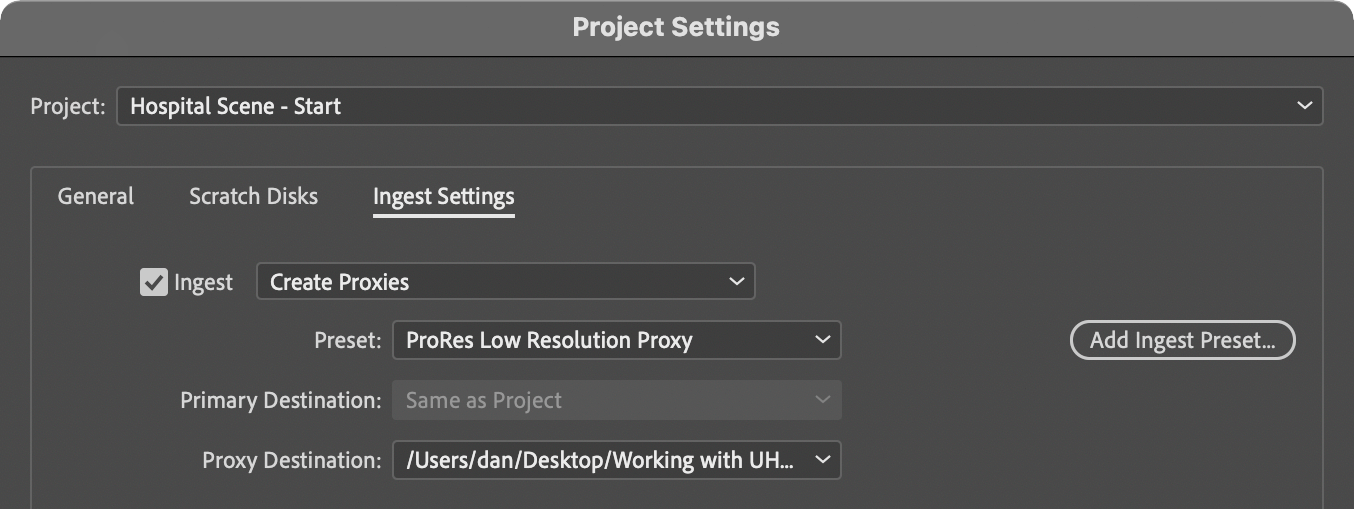Get detailed guidance on mastering Premiere Pro, specifically focusing on syncing, double system shooting and creating sequences. Learn how to synchronize an Audio/Video file with a standalone audio file, download class files from Noble Desktop, and understand the best practices of converting mono files to stereo.
Key Insights
- The tutorial walks through the process of synchronizing an Audio/Video file with a standalone audio file, which is typically recorded at the same time. This workflow is known as double–system or dual–system shooting.
- Students can download the class files needed for the exercise from the Noble Desktop website using a specific code provided.
- Creating a sequence in Premiere Pro involves assembling various assets together. A sequence can contain any number of video, image, and audio files necessary for editing tasks.
- For interviews, there are often two audio sources - the onboard camera mic and an external audio recorder. The camera audio is typically captured purely for syncing with the external recorder, providing more control over audio.
- The tutorial also discusses timecode, which is written as hours: minutes: seconds: frames. Professional video editing apps like Premiere Pro use SEMPTE (Society of Motion Picture and Television Engineers) Timecode for navigation.
- Depending on the workflow, it may be necessary to convert mono audio files to stereo before working with them in Premiere Pro. This conversion process is detailed in the tutorial.
Enhance your editing skills with this Premiere Pro tutorial, which provides step-by-step instructions on synchronizing an Audio/Video file with a standalone audio file through a workflow called double-system or dual-system shooting, creating sequences and syncing audio and video on the timeline.
This exercise is excerpted from Noble Desktop’s Adobe Premiere Pro training materials and is compatible with Premiere Pro updates through 2023. To learn current skills in Premiere Pro with hands-on training, check out our Premiere Pro Bootcamp, Video Editing Certificate, and video editing classes in-person and live online.
Topics Covered in This Premiere Pro Tutorial:
Syncing, Double System Shooting
Exercise Preview

Exercise Overview
In this exercise you will synchronize an Audio/Video file with a stand alone audio file that was recorded at the same time. This workflow called double–system or dual–system shooting requires that you capture scratch audio with your video but allow you to use a wider range of mics and dedicated hardware to capture your main audio.
Downloading the Class Files
We made a separate download just for the files used in this bonus exercise.
- Go to Noble Desktop.com/download
- Enter the code pp-2102-15-Sync
- If you haven’t already, click Start Download.
- After the .zip file has finished downloading, be sure to unzip the file if it hasn’t been done for you. You should end up with a Syncing AV folder.
- Drag the downloaded folder into your Class Files > Premiere Pro Class folder.
Getting Started
If a project is open in Premiere Pro, go to File > Save, then File > Close Project.
Go to File > Open Project and navigate to Desktop > Class Files > Premiere Pro Class > Syncing AV.
Double–click on Syncing Audio and Video.prproj.
Go to File > Save As. Name the file Your Name—Syncing Audio and Video and save it to Desktop > Class Files > Premiere Pro Class > Syncing AV.
Navigate to the Desktop > Class Files > Premiere Pro Class > Syncing AV folder.
-
Choose Window > Workspaces > Editing. And then:
-
Choose Window > Workspaces > Reset to Saved Layout.
This resets the interface to the default editing workspace and ensures all your panels are returned to their default locations and sizes.
-
Creating a Sequence
A sequence in Premiere Pro is where you assemble your various assets together. It can contain any number of video, image, and audio files that you need to complete your editing tasks. A sequence has properties such as dimensions, frame rate, pixel aspect ratio, etc. Any footage added to a sequence has to be conformed to match the sequence settings. Usually we create a sequence from whichever clip represents the majority of our footage.
In the Project panel, use the arrow
 to expand the 01—Video bin.
to expand the 01—Video bin.-
From the bin, drag Main Interview.mp4 into the empty Timeline panel.
This creates a new sequence based on the settings of that clip.
-
Hold Shift and press the + (plus) key to expand the height of all of the video and audio tracks in the Timeline.
NOTE: Pressing Shift and + (plus) enlarges all the tracks while Shift and – (minus) reduces the heights of all the tracks on the timeline.
You can also enlarge the video or audio tracks using the vertical scroll bars on the right of the Timeline.
Individual track heights can be resized by dragging their border up or down in the track header section on the left of the Timeline.
-
Let’s pull our new sequence out of the folder.
In the Project panel, drag the new Main Interview sequence (it’s called Main Interview, NOT Main Interview.mp4) out of the bin and into an empty area of Project panel.
CTRL–click (Mac) or Right–click (Windows) on the Main Interview sequence and choose Rename.
Rename the sequence Interview—Dan Rodney.
Syncing Audio & Video on the Timeline
For this interview we have two audio sources, the onboard camera mic and an external audio recorder. In this situation, the camera audio was captured purely for the purpose of syncing it with the external recorder. This workflow is know as “double–system” shooting and while it requires a bit more planning than just capturing the audio onto the camera, it offers more control over the audio.
Drag the interview_audio.wav clip into the Timeline and place it on the Audio 2 track (so it starts at the beginning of the Timeline).
In the Tools panel, click on the Selection tool
 .
.In the Timeline, click on any empty area and drag a selection box over the clips to select them.
-
CTRL–click (Mac) or Right–click (Windows) on either of the clips and choose Synchronize. Then set the following:
- Check on Audio.
NOTE: The Track Channel option has no choices because we are syncing a stereo file and a mono one.
Click OK to sync the clips.
-
CTRL–click (Mac) or Right–click (Windows) on the audio/video clip (the blue one) and choose Unlink from the menu.
NOTE: For the next few steps it is important to not accidentally unsync the audio and video. So do not drag any of the clips left or right on the timeline until the instructions tell you to do so.
- Click on the audio clip on the Audio 1 track (thats the blue one).
- Press Delete (Mac) or Backspace (Windows).
- With the Selection tool
 , drag a selection box over the 2 remaining clips.
, drag a selection box over the 2 remaining clips. - CTRL–click (Mac) or Right–click (Windows) on one of the selected clips and choose Link.
- Drag the audio clip up to the Audio 1 track.
- Drag the linked clips to the left until the audio clip snaps to the beginning of the Timeline.
-
At the top left of the Timeline you’ll see some Timecode such as 00:00:00:00. If you’re not familiar with Timecode, read the following sidebar.
Understanding Timecode
Timecode is written as hours : minutes : seconds : frames So 01:02:03:04 is 1-hour, 2 minutes, 3 seconds, and 4 frames.
Professional video editing apps like Premiere Pro use SEMPTE (Society of Motion Picture and Television Engineers) Timecode to navigate both the main timeline as well as the timeline within video/audio files. Timecode counts up from right to left. Frames add up to make seconds, seconds make minutes, and minutes make hours. The number of frames in a second is based on a frame rate, which is measured in FPS (Frames Per Second).
- Press the + (plus) key once to zoom closer in on the Timeline. Use the + at the top of the keyboard (not the number pad key which does something different).
-
Move the playhead to 00:00:19:05 by doing one of the following:
- Drag the Timeline’s playhead
 to 00:00:19:05
to 00:00:19:05
- At the top left of the Timeline, click on the Timecode, type 1905 and hit Return (Mac) or Enter (Windows).
NOTE: This is right before the speaker begins talking.
- Drag the Timeline’s playhead
-
In the Tools panel, click on the Razor tool
 .
.NOTE: Pressing the C key activates the Razor tool.
In the Timeline, click on the clip where the playhead overlaps it (to cut the clip).
CTRL–click (Mac) or Right–click (Windows) on the clip on the left of the playhead and choose Ripple Delete from the menu.
Move the playhead to 2:55:00 by either dragging the playhead there, or by clicking on the Timecode at the top left of the Timeline, typing 25500 and hitting Return (Mac) or Enter (Windows) to go there.
Again click on the clip where the playhead overlaps it (to cut the clip).
-
CTRL–click (Mac) or Right–click (Windows) on the last clip (to the right of the playhead) and choose either Clear or Ripple Delete.
NOTE: Because this is the last clip in your timeline, it doesn’t matter whether you use the Clear or Ripple Delete commands. The difference between the two commands is that Ripple Delete will move any clip after the one you remove to prevent a gap in the timeline from forming.
-
Choose File > Save or Cmd–S (Mac) or CTRL–S (Windows) to save your project.
Keep the project open because you’ll use it in the next exercise.
Converting a Mono File to Stereo
Depending on your workflow, it may be necessary to convert mono audio files to stereo before working with them. The steps below walk you through this process in Premiere Pro.
-
In the Project panel, CTRL–click (Mac) or Right–click (Windows) on the file you want to convert and choose Modify > Audio Channels.
Alternately, you can choose Clip > Modify > Audio Channels with the clip selected.
-
Notice this clip is mono, which is common for microphone recording. If we used this audio as it currently is, the track would be mono in the Premiere Pro timeline but export as stereo in the final video.
For many use cases that’s fine, but as a best practice for broadcast workflows, we can convert it to stereo. Converting to stereo must be done before adding the audio to the timeline, so let’s see how to do it.
Change Clip Channel Format to Stereo.
Under Media Source Channel click on the check box next to R. This converts the mono audio clip into a stereo one.
Click OK.
NOTE: When using the Synchronize command, depending on how the audio was recorded, you may have either a stereo or mono audio recording. A stereo audio file can contain different audio content on each channel. So just to be safe you will often want to set Track Channel to Mix down when working with a stereo recording. This will make sure both channels are mixed together before trying to sync the audio.


